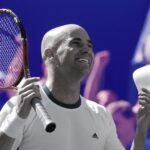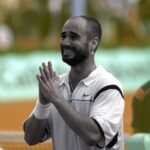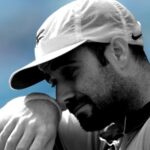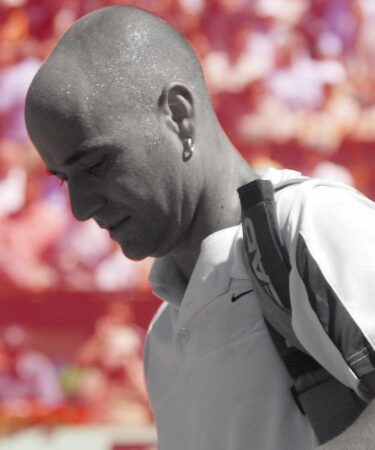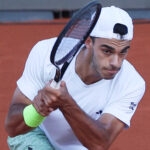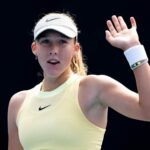November 7, 1999: The day Andre Agassi achieved an unprecedented Parisian double
On November 7, 1999, Andre Agassi emerged victorious from a breathtaking final against Marat Safin at Paris-Bercy (7-6, 6-2, 4-6, 6-4). With his win the American became the first player to win this in Bercy after having triumphed at the French Open the same year
 © Panoramic / Tennis Majors
© Panoramic / Tennis Majors
What happened exactly on that day?
On this day, November 7, 1999, Andre Agassi defeated Marat Safin in the Paris Masters 1000 final (7-6, 6-2, 4-6, 6-4). With this win, the American, who had already triumphed at both Roland-Garros and the US Open, secured the year-end world No 1 ranking. He also became the first player to achieve the feat of winning both Paris tournaments (Roland-Garros and Bercy) in the same year, a feat that has only been matched by Novak Djokovic (in 2016 and in 2023) since.
The players : Andre Agassi and Marat Safin
- Andre Agassi: From the top to the bottom and then back to the top
Andre Agassi, the “Las Vegas Kid”, was a tennis icon. He turned professional in 1986 and would soon become one of the game’s’ biggest superstars, thanks to his incredible tennis skills as well as his keen sense of fashion, including the iconic denim shorts and the neon pink compression shorts he famously wore for Nike.
Taught by his father and bred at the Nick Bollettieri Academy, Agassi’s game relied on a legendary return of serve (the best of its time) and on uncanny timing, which enabled him to strike the ball on the rise on both sides with incredible power. This skill was revolutionary at the time, and later copied by generations of tennis players.
After finishing runner-up three times at the majors, once at the US Open (1990) and twice in Roland-Garros (1990 and 1991), Agassi claimed his first Grand Slam title at Wimbledon in 1992, defeating big-serving Goran Ivanisevic in the final (6-7, 6-4, 6-4, 1-6, 6-4). This title was followed by the 1994 US Open and the 1995 Australian Open, the only time he beat his arch-rival, Pete Sampras, in a Grand Slam final (4-6, 6-1, 7-6, 6-4).

Agassi reached world No 1 shortly after this success, on April 10, 1995, and stayed at the top for 30 weeks. In 1996 and 1997, despite a gold medal claimed at the 1996 Olympic Games in Atlanta, the American struggled mightily, and his ranking dropped as low as No 141 in the world. Displaying humility, he went back to play on the ATP Challenger Tour at the end of 1997 to regain his confidence.
He slowly returned to the top in 1998, finishing the year as world No 6, although his Grand Slam results were disappointing. In June 1999, Agassi eventually triumphed at Roland-Garros, edging Andrei Medvedev in five sets (1-6, 2-6, 6-4, 6-3, 6-4), thus completing a career Grand Slam. Since then, Agassi had finished runner-up to Pete Sampras at Wimbledon (6-3, 6-4, 7-5) and claimed another Grand Slam crown at Flushing Meadows, defeating Todd Martin in the final (6-4, 6-7, 6-7, 6-3, 6-2). Thanks to that second US Open title, Agassi reclaimed the world No 1 spot in September.
- Marat Safin: The rising Russian
Marat Safin, from Russia, was born in 1980. He obtained his first remarkable result at Roland-Garros in 1998: ranked only No 116 in the world, he made his way out of the qualifying draw, and then beat former world No 1 Agassi in the first round (5-7, 7-5, 6-2, 3-6, 6-2). In the next round, the 18-year-old ousted defending champion and world No 8 Gustavo Kuerten (3-6, 7-6, 3-6, 6-1, 6-4), and he was eventually beaten in the fourth round by Frenchman Cedric Pioline (7-5, 4-6, 6-7, 6-4, 6-4).
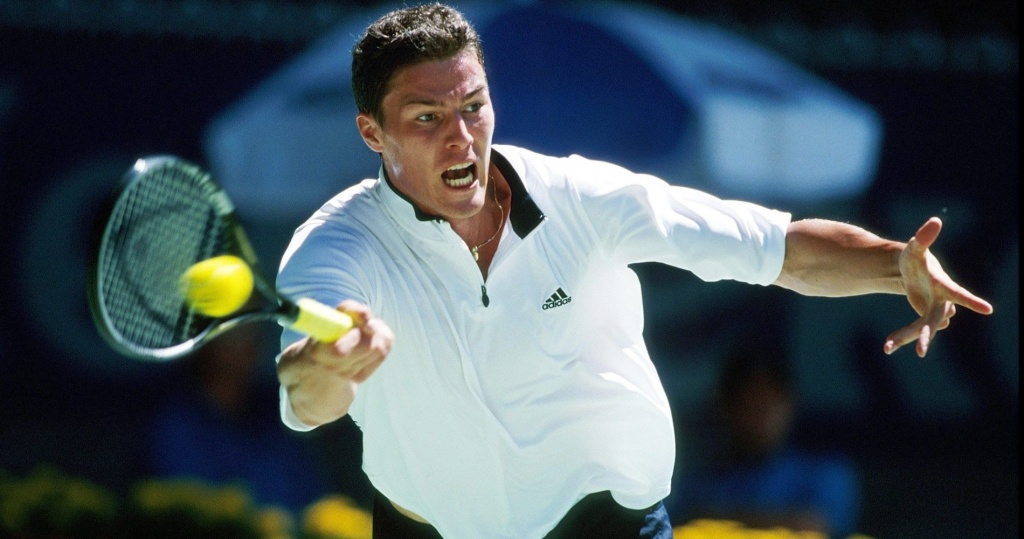
Safin then reached the semi-finals in Long Island, before making it to the fourth round again at the US Open (defeated by world No 1, Pete Sampras, 6-3, 6-4, 6-2). He finished the year ranked 48th on the ATP Tour. In 1999, he claimed his first title in Boston (defeating Greg Rusedski in the final, 6-4, 7-6). He reached the fourth round again at Roland-Garros (lost to Dominik Hrbaty, 6-4, 3-6, 7-6, 6-3) and helped Russia reach the Davis Cup semi-finals, winning two fifth and decisive matches. In November 1999, Safin was world No 34.
The place : Palais omnisports de Paris-Bercy
The Paris-Bercy Open was held for the first time in 1986, at the Palais omnisports de Paris-Bercy, which had been unveiled in 1984, and had a capacity of 15,000 spectators. It replaced the former Paris Indoor Open, which was held from 1969 until 1982 at another venue, the Stadium Pierre de Coubertin.
In 1990, it entered the Super 9 category (later known as Masters 1000), and it was probably the most prestigious indoor event at the time. The tournament had been won by several tennis greats, including Boris Becker (1986, 1989, 1992), Stefan Edberg (1990) and Pete Sampras (1995, 1997). Andre Agassi had already triumphed there in 1994, a few months after his first US Open title.
The facts: Agassi wins Bercy after winning Roland-Garros
Since his triumph at Roland-Garros in early June of that season, Andre Agassi seemed to have chartered a whole new career. The “Las Vegas Kid”, who had hit rock bottom two years earlier, when he was No 141 in the world at the end of 1997, had reclaimed the No 1 spot, three and a half years after his last stint at the top of the rankings in February 1996. Runner-up at Wimbledon, Agassi triumphed at the US Open and was now aiming for the year-end No 1 spot.
Agassi was out for revenge against the then teenager: in the first round of the 1998 French Open, the Russian had announced his arrival on the world stage by defeating the American in five sets.
The final started at a very high level. Both players stuck to their baseline and, hit with jaw-dropping pace and power and engaged in spectacular rallies. Although the young Russian broke Agassi’s serve in the third game, he was broken back in the following game. The more experienced player eventually won the first set, 7-6.
Safin, who was already known for his temperamental nature and his tendency to break racquets, collapsed in the second set, which he lost 6-2. He gathered himself and fought back vigorously, claiming the third set, 6-4.
In a very tense fourth set, Agassi took a 3-1 lead but was broken back immediately as Safin leveled back for 3-3. Eventually, the US Open champion raised his level when it mattered the most to seal his victory, 7-6, 6-2, 4-6, 6-4 and thus became the first player to triumph at both Roland-Garros and Bercy in the same year.
“I thought we were both outstanding today,” Agassi said in the press conference. “He kept it together very well today and made me earn it from start to finish.“
“I’ll never forget the year I had in Paris in 1999”, said Agassi to the French crowd. “All the support I received from the public made me feel like I was paying in my own country. In 2000, when I come back, I should have learned a few words in French.“
What next? Agassi wins three more Slams while Safin claims two Majors
In the years to come, Agassi would add three more Australian Open titles to his career achievements (2000, 2001, 2003), holding a total of eight Grand Slam titles, and he would appear at the top of the ATP rankings for the last time on September 7, 2003. In 2005, aged 35, he would reach his last Grand Slam final in New York, where he was defeated by Roger Federer (6-3, 2-6, 7-6, 6-1).
It wasn’t until 2006 that Agassi left the Top 10 once and for all. Playing only eight tournaments, he would put an end to his career at Flushing Meadows. After delivering one last epic fight to prevail against world No 8 Marcos Baghdatis (6-4, 6-4, 3-6, 5-7, 7-5), he would be defeated by Benjamin Becker in the third round (7-5, 6-7, 6-4, 7-5).
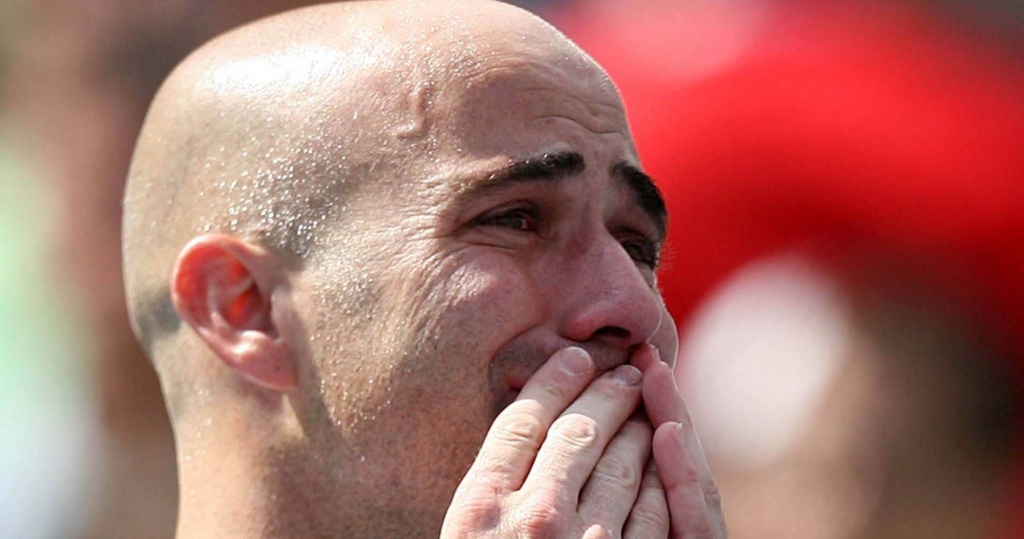
Marat Safin would become an iconic player of the 2000s. He would claim two Grand Slam titles, the first one at the 2000 US Open (defeating Pete Sampras in the final, 6-4, 6-3, 6-3), and the second one at the 2005 Australian Open, where he would beat Lleyton Hewitt in the final (1-6, 6-3, 6-4, 6-4) after an epic semi-final win against Roger Federer (5-7, 6-4, 5-7, 7-6, 9-7).
In November 2000, Safin would become the youngest world No 1 in men’s tennis history (a record broken in 2001 by Hewitt and later by Carlos Alcaraz in 2022), but he would only hold that spot for nine weeks. His 2005 triumph in Melbourne proved to be his last title on the tour. After a slow decline, Safin would eventually retire in 2009.

